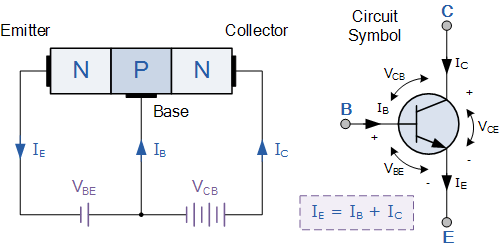Question
Question: The lead marked with the arrow is the: 
A) Collector
B) base
C) emitter
D) Core
Solution
Transistor is the device that is used as the amplifier and also the switch. It possesses three terminals in it as the base, collector and the emitter. These are made up of the semiconductor in which both PN junction diodes are connected back to back.
Complete step by step solution:
The given diagram represents the NPN (Negative Positive Negative terminal) transistor and the lead marked with the arrow is the emitter. In this the P type semiconductor is placed between the N type semiconductor and the center part in both PNP and the NPN transistors are the same and it is base. The top part in the NPN part is collector. The arrow represents the direction of the movement of the electrons from the emitter and is thick.

The emitter supplies the large negative charged electrons to the collector by the use of the base. Here the positive charge that is moved from the positive terminal to that of the negative terminal and this forms the electric circuit. This type of transistor can be biased in either common base, or common emitter or the common collector mode.
Thus the option (C) is correct.
Note: The NPN transistor is most commonly used than the other types. The base is thin and is placed between the collector and the emitter and it is lightly doped. The very small current is used by the base to work as a switch between the collector and the emitter.
